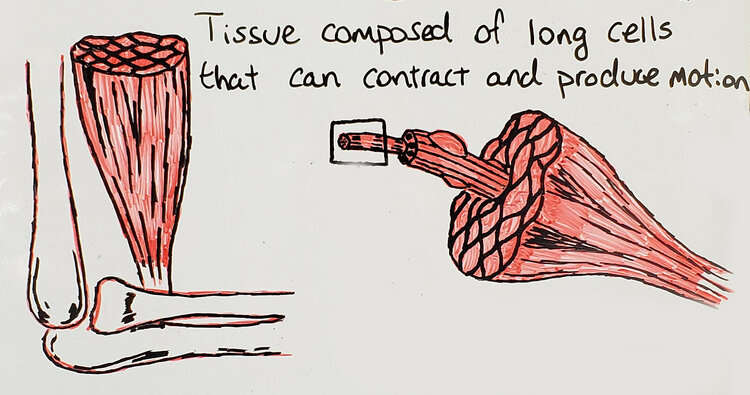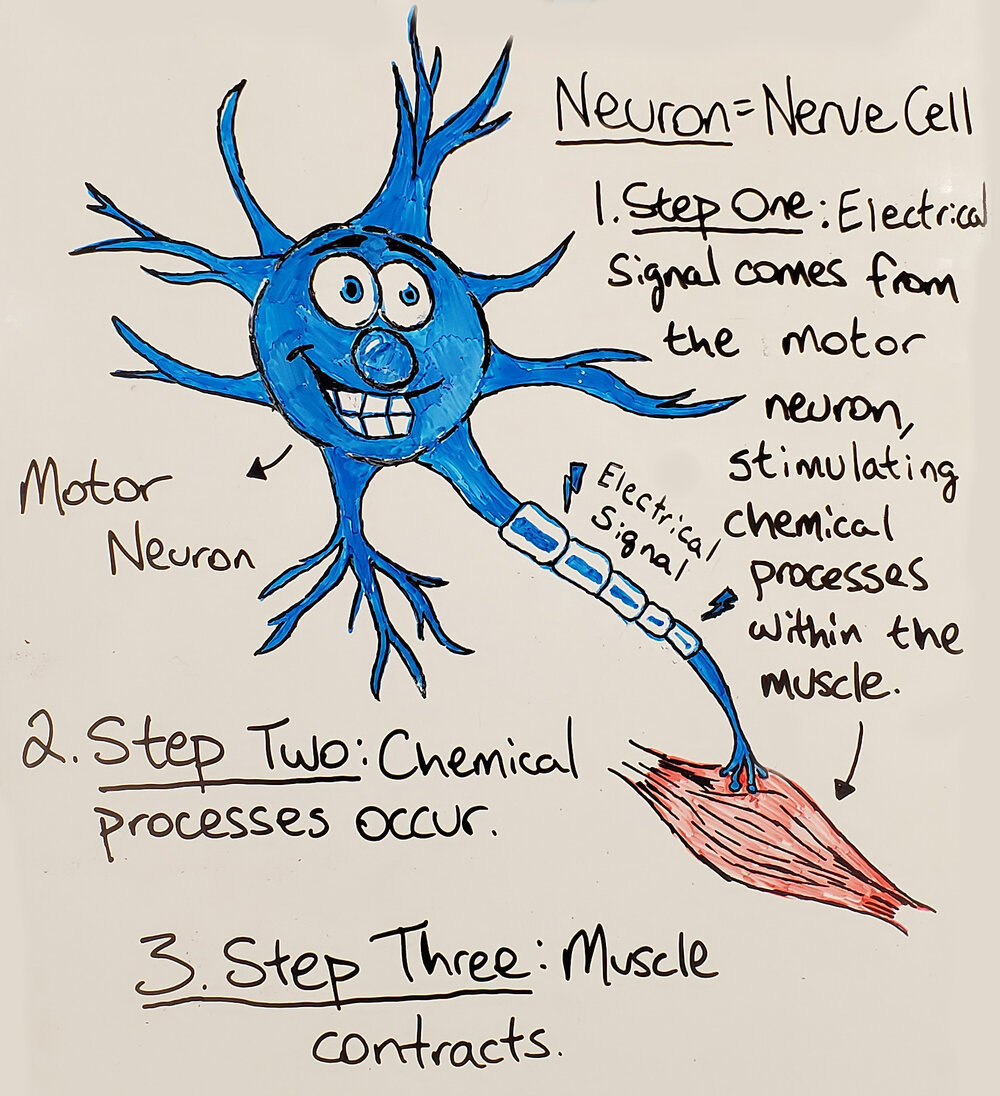
I want to introduce you to some of the reasons we train. Specifically, I want to discuss the basics of the three body components we are having an effect on when we strength train. They are our joints, muscles, and neurons. Now, this is a brief analysis of these bits of our anatomy. I’ll discuss how exactly we maximize them in other blogs. For now, read this blog before you start your next strength program.
Joints
Joints are junctions of bones. Most joints are named by the intersection of the two bones that make up the joint. For example, the elbow is made up of two joints that connects three bones: the humeroradial and the humeroulnar joint.
There are joints that allow no movement, some movement, and then a lot of movement. You actually have joints that connect the individual bones of your skull together. Obviously, movement here wouldn’t be ideal. Then, you have joints, like the ones that make up the spine, that offer more movement than those skull joints, but less than the hip or the knee.
Speaking of hip and knee joints, they are not the same in their structure. Although they make up the same class of joints, they don’t all do the same things. Obviously, we’ve all heard of axes when it comes to math class. Well, that’s another way joints are classified. There are joints that are uniaxial and allow movement on one axis, like the elbow. Biaxial joints, which, you guessed it, allow motion in two, like the wrist or foot. And multiaxial joints that allow movement in a whole gaggle of axes. You may have heard of a little joint called the hip, or maybe even the shoulder. These are multiaxial joints and move all sorts of ways. However, it should be noted that these are very basic names for these joints. Truly, the shoulder is made of a whole bunch of joints, not just the ball and socket one we have all come to know and love.
Muscles
Joints aren’t alone in this battle of movement. If they were, you’d be screwed, because you actually couldn’t move in the ways your joints allow. That’s where muscles come in. A muscle is this crazy tissue that crosses joints and based on the direction and attachments, it will produce the movement that the joint allows (or sometimes doesn’t, if you have crappy mechanics).

The reason a muscle can do this is because it is made up of contractile tissue. What this means is that it can get shorter or longer because it has mechanisms inside that can slide over each other.
If you can’t picture this, take your hands and interlace your fingers. Bring your hands close so that they are interlaced nice and tight. Then, bring them apart so that the sides of your finger tips are touching. Awesome, your hands have now simulated muscles. If each of your fingers is a muscle filament, then them being interlaced is how the filaments within a muscle slide along one another.
This is called the Sliding Filament Theory and saying names of theories makes me feel like a scientist.
When a muscle is producing force (i.e opening a door, kicking a soccer ball, telling a girl your trying to impress which way the beach is), those filaments are stacking on top of each other, just like your interlaced fingers, and moving the two ends of the joint it’s attached to closer together. If the bicep attaches at the top of the upper arm and connects to the upper part of the bone below the elbow, flexing the bicep would cause the hinge-like elbow joint to close up.
If these filaments can slide on top of one another, is it possible for them to get stuck? Yes, presumably, it is. That is where some of your immobility and inflexibility comes from. Obviously I’m oversimplifying the equation. There is connective tissue and nerve cells that are also causing immobility. However, some of it does come from your filaments being “stuck” in an unslid position.
Neurons
Savvy kinesiology PhD, please do not mind the simplification of what I am about to say. Nerve cells transmit electrical signals that tell the body what to do. Whether that is to beat your heart, tell you to move your hand from a hot stove, or to text your boyfriend and tell him it’s over Brian.

Neurons are pretty ubiquitous. When it comes to nerves, muscles get special motor neurons that come from your spinal cord. The cool thing about motor neurons is although each muscle fiber only gets one, motor neurons can be attached to hundreds or even thousands of muscle fibers. I could’ve made an analogy to polygamy right there, but I don’t want to offend anyone. It’s 2020 and I’m trying to be a man of the people. However, polygamous motor neurons are not always the solution. Sure, in big muscles like your quadriceps, a motor neuron that activates a whole gang of muscle fibers is great. But, for finer movements, motor neurons may only innervate one or two muscle fibers at a time. So, if you’re trying to get a quick peek at the cutie from across the library, those small movements of your eye need a more monogamous approach for motor neuron to muscle fiber marriage.
Motor neurons tell your muscles move, muscles make your joints move, therefore, you move. When motor neurons need you to increase how much you are moving, many of them band together to produce the force necessary to take the lid off of the pickle jar. Even more of them are required to back squat 500lbs (depending on how bad at taking pickle jar lids off).
Apart from motor neurons, there are sensory neurons that also play a role in your muscles being able to do things. Sensory neurons might do things like tell you if a feather brushes up against your forearm, if you have a knife through your calf, or to tell the brain how stretched out they feel. The last one is important (not to say the first two weren’t) because your crappy mobility might be caused by sensory neurons sensing instability and tightness and stopping you short during a lift or a stretch. This might not even be because your muscle truly isn’t that length, but that sensory nerve thinks that it shouldn’t lengthen any more or you’ll die (more likely it is just thinking you’ll sprain it). One thing mobility training can do is provide our muscles with the peace and quiet from some of these sensory nerves and allow them to lengthen a little more than previously thought.
This was a gross oversimplification of neurological principles by a guy who only has his Bachelor’s in a semi-related field. So, take what I said with a grain of salt. However, if you’re wondering what you are training when you train, I hope now you feel a little closer to that answer.